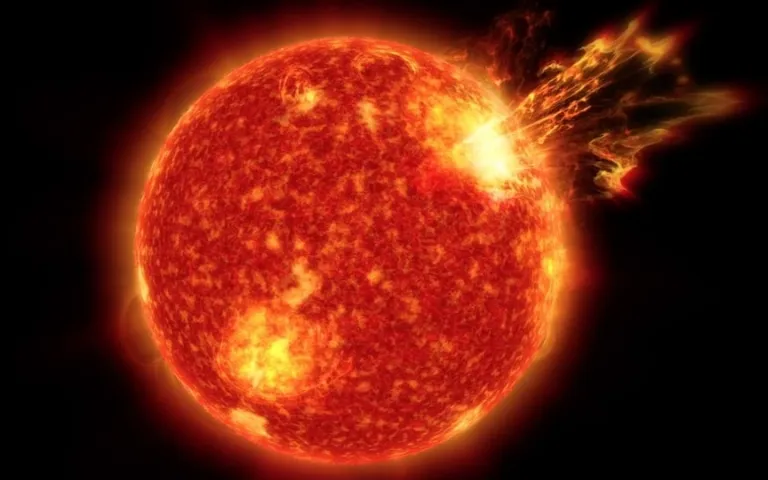NOAA Confirms Solar Storm to Impact Earth Today
Yesterday, NASA’s model showed a massive coronal mass ejection (CME) cloud released from the blast site of the X1-class solar flare eruption that was expected to hit Mars and Venus. However, a new model from the National Oceanic and Atmospheric Administration (NOAA) has now predicted that the Earth will also be hit by the cloud today, June 23. NASA had previously warned that the CME was powerful enough to erode a part of Venus’ atmosphere upon impact, but the extent of the impact on Earth remains uncertain.
According to a SpaceWeather.com report, “NOAA forecasters say there is a small G1-class geomagnetic storm late on June 23 when the CME may hit Earth’s magnetic field. This is the same CME that was thrown into space by the X1-class solar flare on June 20. Initially it appeared that the CME would miss Earth; however, additional modeling suggests that a glancing blow may be possible.”
A solar storm will hit Earth tomorrow
The CME will hit Venus first and then Earth today. On June 25, it will reach Mars and according to NASA’s model, the solar storm will be so intense that the aurora borealis can be seen from satellites orbiting the red planet.
However, it is not possible to estimate the intensity of the future solar storm that the Earth may suffer from. The reason for this is that we do not know whether the effect of the CME is a striking shock or a head-on collision. A flash shock can only produce a G1 or G2 geomagnetic storm. But a full-scale strike could produce as much as a G5 storm. Such storms can cause more damage than normal. They can damage small satellites, affect mobile communications networks, GPS, and even pose a threat to ground-based electronics and power grids by vastly increasing the magnetic potential.
Know the GOES-16 satellite
GOES-16, formerly known as GOES-R before it reached geostationary orbit, is the first of the GOES-R geostationary operational environmental satellites operated by NASA and NOAA. It was launched on November 19, 2016 and became operational on December 18, 2017. GOES-16 is located in geostationary orbit over the Atlantic Ocean and provides continuous images and atmospheric measurements of the Earth’s Western Hemisphere. It also has a lightning mapper that can detect both cloud-to-cloud and cloud-to-ground lightning. GOES-16 is an important tool for weather forecasting, climate monitoring and space weather forecasting.




